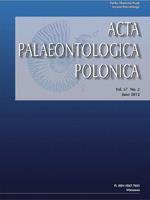A partial plesiosauroid skull from the São Gião Formation (Toarcian, Lower Jurassic) of Alhadas, Portugal is re-evaluated and described as a new taxon, Lusonectes sauvagei gen. et sp. nov. It has a single autapomorphy, a broad triangular parasphenoid cultriform process that is as long as the posterior interpterygoid vacuities, and also a unique character combination, including a jugal that contacts the orbital margin, a distinct parasphenoid—basisphenoid suture exposed between the posterior interpterygoid vacuities, lack of an anterior interpterygoid vacuity, and striations on the ventral surface of the pterygoids. Phylogenetic analysis of Jurassic plesiosauroids places Lusonectes as outgroup to “microcleidid elasmosaurs”, equivalent to the clade Plesiosauridae. Lusonectes sauvagei is the only diagnostic plesiosaur from Portugal, and the westernmost occurrence of any plesiosaurian in Europe.
How to translate text using browser tools
20 May 2011
A New Plesiosauroid from the Toarcian (Lower Jurassic) of Alhadas, Portugal
Adam S. Smith,
Ricardo Araújo,
Octávio Mateus

Acta Palaeontologica Polonica
Vol. 57 • No. 2
June 2012
Vol. 57 • No. 2
June 2012
Elasmosauridae
Jurassic
Lusitanian basin
Lusonectes sauvagei
plesiosaur
Plesiosauria
Plesiosauridae




